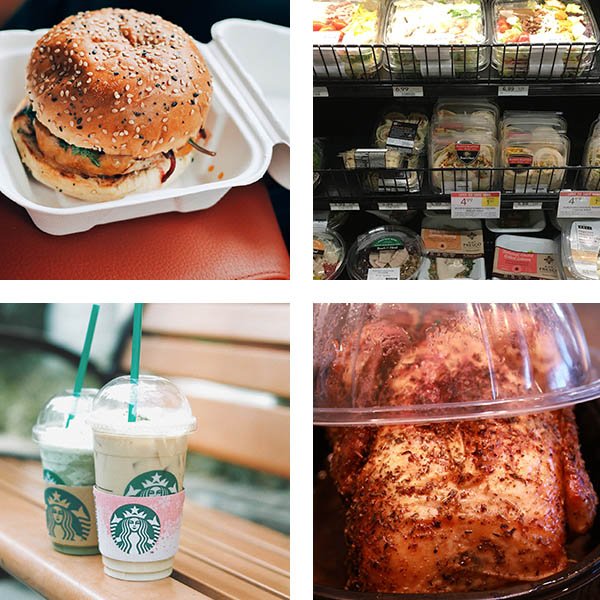Planet Packaging: How to Move Your Brand to Eco Friendly
The promised land of convenience has arrived! That’s right, IHOP recently rolled out its new delivery service. Heavenly for you if you want your mountain of pancakes without having to leave the couch. Horrible for the planet unless our greatest minds have found a way to turn plastic into ozone. It’s all plastic all the time: forks, knives, containers… everything right down to the syrup jugs. All that damage to our ecosystem for three dollars worth of starchy fluff? Only you know if it’s personally worth the cost. But if you’re hoping to shrink your ecological footprint down from King Kong proportions, it’s time to find a better way.
The danger to our world is present and growing.
Today, the average person living in North America or Western Europe consumes 220 pounds of plastic each year, mostly in the form of packaging. Plastic packaging was 42% of all non-fiber plastic produced in 2015, and made up 52% of plastics thrown away. The main cause for recent increases in plastic production? Plastic packaging.
Seriously, people. Last month I opened my front door to find a toilet paper order from Amazon boxed up in so much bubble wrap you’d think I ordered a Fabergé egg.
You’ll find that a lot of everyday products aren’t far behind pancakes and toilet paper packaging on the waste train.
Half gallon containers of orange juice and milk come in waxed cardboard, but if you want to upgrade to a gallon you’re looking at, you guessed it, more plastic.
Pens are also now almost entirely disposable, but most people want to think about where they end up about as much as they want to ponder their in-laws’ sex life. The ink runs dry and we inevitably trash the plastic tube, sending it on a journey that ends with it jammed up the nostril of a sea turtle unimpressed with his new snorkel.
Loudly organic and planet-friendly grocery stores pitch themselves as eco-conscious, then bag everything in plastic. And do we really need a giant, Costco-sized plastic handle between two jugs of juice as we think we’ll never survive the schlep up Everest that is carrying our groceries from the car to the kitchen?
Why not make these and other products out of some form of biodegradable material? What convenience Kool-Aid are we guzzling that it seems so long ago in a land far away that milk came in reusable glass bottles?
Why do we have to produce, live, and consume this way?
When companies engage in environmentally damaging practices without repercussions, and their bottom line never takes a hit, they have no reason to change their practices. Profit is priority number one, and profit from wasteful production is king. But corporate growth won’t keep the Sunshine State from becoming the next Atlantis, and Disney World transformed into an underwater magical kingdom with a drowned mouse and imagineering accessible only by submersibles and scuba divers. If we don’t start paying attention and changing our approach to consumption then, at best, we’ll be living in a world of our own filth, shaking our heads from our overcrowded, tropical shacks in Greenland telling our sweaty grandkids that it really wasn’t our fault. (We needed those pancakes now!) More likely we won’t have a livable planet left to waste.
See, here’s what matters: we’re all connected. Everything we do affects something, or someone, somewhere.
As a consumer nation, we should be more aware and vigilant with our behaviors and habits. It’s time to hold ourselves accountable and take individual and collective responsibility for our effect on the world. We have a chance to set a standard. We have a chance to do more. We have a choice to make. And the time is now. This isn’t someone else’s problem, and it’s not something we can hide from by sticking our heads in th ground any longer. This problem belongs to all of us, and it requires action from all of us.
What does this mean for the business community? Well, a company’s brand comes directly from what it communicates to its customers; it represents the reputation and culture of an organization. So what does your packaging say about your brand—who you are as a business, what you value, and how you feel about your consumers? If a company is damaging the earth through its packaging, its brand is telling customers that it cares next to nothing about their wellbeing. When businesses churn out seemingly endless amounts of waste in the form of styrofoam and plastics and eco-devastating materials and have no program in sight to convert to biodegradable packaging, they’re telling the consumer, “The Earth? Not my problem.” Not a winning strategy for an increasingly eco-conscious retail community.
But here’s the key. It doesn’t have to be this way.
There are many different, affordable paths and great designers who can help companies make the transition to being part of the answer rather than part of the problem—partners and methods working to rebuild and maintain the kind of environment we want for ourselves and those that come after us.
So how can your company embrace the kind of responsible, eco-friendly, sustainable packaging that consumers increasingly expect? The answer can be found in innovative, new options—such as biodegradable, compostable, recycle-based, and fiber-based packaging—already developed and harnessed by a range of dynamic and successful businesses.
Compostable flexible packaging by Elevate Packaging, for example, requires much less waste than rigid packaging, less transit resource needs, and uses fewer natural resources in production. Material-conscious, recycle-based package design from Salazar Packaging and Earthpack minimizes materials, uses as much recycled content as possible, and assures the end result is also recyclable. Be Green Packaging offers renewable, sustainably harvested, natural fiber packaging for foodservice and consumer packaged goods that is biodegradable and compostable in a safe and beneficial manner for the environment.
Methods such as these, and the companies that use them, create benefits such as utilizing abundant, renewable raw materials, decreasing their carbon footprint, minimizing energy waste, and lowering water usage and emissions. By some estimates, the global sustainable packaging market will reach about $440.3 billion by 2025, growing at a compound annual growth rate of around 7.7 percent, largely driven by consumer demand. And though sustainable packaging can come with increased costs, the benefits in overall sales and improved brand image outweigh the price. In a 2016 survey by Nielsen, millennials said they would be willing to pay more for sustainable goods.
Providing such environmentally-friendly packaging choices is a simple way to help customers improve their impact on the planet, and aligns your brand with their desire for healthy, premium, and sustainable products. The result for your business? These and other “green” options can be cost-effective, affordable, increase efficiency, create a unique competitive advantage, and help you build a more positive, eco-conscious brand reputation. And while making the transition to green packaging may not be possible overnight, phasing into sustainability is achievable, improves a company’s bottom line, and creates a brand—and a relationship—that both the business and the consumer can be proud of.
There’s a better way. Alternatives are out there. And they’re within reach.
– Tanner
Tanner has 20+ years experience in world cultures and writing. He also served in communications for the U.S. Senate and as a professor for Culture and Civilization in Tunisia.






